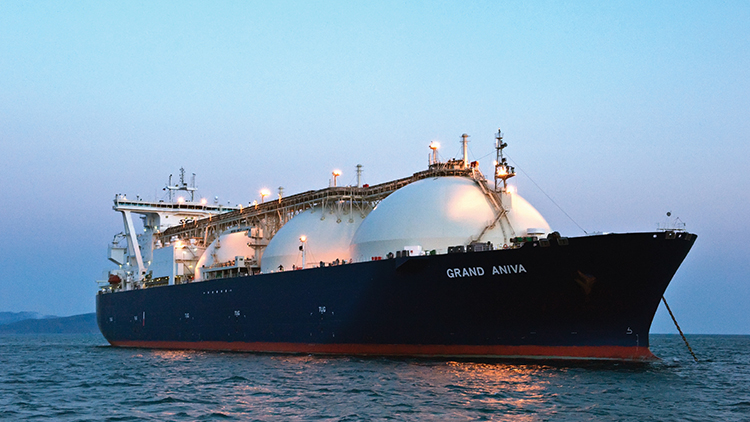The European Union’s efforts to decouple from Russian gas in response to the war in Ukraine initially positioned the Eastern Mediterranean as a key alternative supplier. Before the war, Russia supplied over 40% of the EU’s natural gas, primarily through pipelines via Ukraine and Nord Stream. After the war began in 2022, Russian pipeline imports plummeted—falling to around 11% by 2024—due to sanctions and escalating geopolitical tensions.
Eastern Mediterranean’s Promise and Pitfalls
The idea of turning to the Eastern Mediterranean gained traction, especially after significant discoveries in the Tamar and Leviathan fields (Israel), the Zohr field (Egypt), and the Aphrodite and Cronos fields (Cyprus). However, the region—spanning Israel, Lebanon, Egypt, Cyprus, Turkey, and Palestine—continues to be shaped by overlapping maritime claims, unresolved conflicts, and shifting energy alliances. These factors have dashed many of the initial hopes, according to Ferid Belhaj, author of The Ebbs and Flows of Eastern Mediterranean Gas Politics in 2025.
Rising Geopolitical Risks
Escalating geopolitical risks since October 7 have added a new layer of complexity to the region’s energy landscape. These conflicts not only threaten existing energy agreements but also cast uncertainty over future exploration and export plans. The maritime agreement signed between Lebanon and Israel in 2022—allowing Lebanon to begin gas exploration in the Qana field while Israel retained control over Karish—is currently frozen.
The TotalEnergies-led consortium, which includes QatarEnergy and Eni, began exploratory drilling in Lebanese waters in 2023. However, findings have been limited, and the subsequent hostilities have discouraged further investment. The region’s energy future remains uncertain, caught between promising reserves and persistent political instability.
Egypt’s LNG Ambitions Face Setbacks
Egypt, considered a central hub for liquefied natural gas (LNG) exports in the Eastern Mediterranean, operates two major LNG plants—Damietta and Idku. However, economic and technical challenges have stalled both production and exports. A decline in gas output, largely due to water infiltration in the Zohr field, and delays in payments to foreign explorers—caused by a dollar crunch—have turned Egypt into a net importer.
Cyprus: Rich Reserves, Limited Options
Cyprus has discovered significant offshore natural gas reserves, but exporting them to Europe remains a major challenge. The most pressing issue is geopolitical tension with Turkey, which disputes Cyprus’s maritime boundaries and has conducted drilling in contested waters. This conflict blocks the most direct and cost-effective export route through Turkey.
Additionally, Cyprus lacks critical infrastructure—such as pipelines and LNG terminals—needed to transport gas to European markets. The ambitious EastMed pipeline project, which aimed to connect Cyprus and Israel to Europe via Greece, was shelved due to high costs and technical hurdles.
Egypt-Cyprus-Israel Agreements: A Turning Point?
Recent developments may signal a shift. Last month, Egypt announced it would begin receiving Cypriot gas starting in 2027. Cyprus plans to transfer its offshore gas via a 90-kilometer underwater pipeline from the Aphrodite field to Egypt’s Zohr production facilities. The pipeline is designed to carry up to 1 billion cubic feet of gas per day. Once in Egypt, the gas will be processed and liquefied at the Damietta LNG plant, then exported to European markets.
In parallel, Israel agreed to double its gas exports to Egypt in a $35 billion deal through 2040. A portion of these inflows will also be allocated for export, further strengthening Egypt’s role as a regional energy hub.
Persistent Uncertainties
Despite these promising developments, risks remain high. The escalation of violence in the Middle East is likely to have long-term impacts on investment by international oil companies (IOCs) in regional gas infrastructure.
Moreover, the Eastern Mediterranean’s energy prospects are increasingly shaped by global energy transition trends. According to Belhaj, natural gas—once seen as a transitional fuel between coal and renewables—now faces an uncertain future amid growing momentum for decarbonization.
The European Union, which initially viewed the region’s gas reserves as a strategic alternative to Russian energy, is now rapidly pivoting toward renewables and green hydrogen. This shift could reduce long-term demand for Eastern Mediterranean gas.
As climate policies tighten and market preferences evolve, energy companies may hesitate to commit large investments to gas projects that risk becoming obsolete. Additionally, competition from Gulf producers like Qatar and the UAE, who are expanding their LNG capabilities, poses a serious challenge. These producers benefit from superior infrastructure and financial leverage, which Eastern Mediterranean countries currently lack.
The energy story of the region is still being written , there are lots of challenges but the potential is still high.
